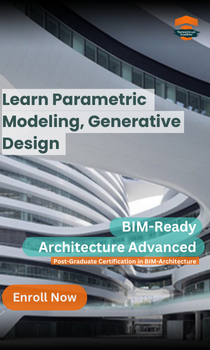Virtual Design and Construction: Building Tomorrow Digitally
May 28, 2024
Category: BIM / Digitization / Automation
SEO TSA

Over the last few decades, the construction sector has experienced one of the lowest productivity and innovation growth rates. Poor compliance with schedule targets has been a persistent concern throughout projects.
Although the developed approaches have had practical benefits in design, architecture, and implementation, it is challenging to effectively integrate organizations, information, policies, and processes to meet client and project objectives. This context introduces the Virtual Design and Construction (VDC) framework.
What is VDC?
Center for Integrated Facility Engineering (CIFE) defines Virtual Design and Construction (VDC) as “the application of multidisciplinary performance models for design-construction projects, which include the Product (i.e., facilities), Work Processes, and Organisation to support business objectives.”
It is the process by which design and construction partners collaborate to simulate all work on a construction project in a 3D virtual environment before executing any work on-site in the real world.
It enables project partners to more efficiently manage all aspects of a project, from schedule to budget to material procurement, and so on, resulting in the best possible outcome.
Components of Virtual Design and Construction (VDC)
Virtual Design and Construction (VDC) has three main components: Integrated Concurrent Engineering (ICE), Building Information Modeling (BIM), and Product Manufacturing Management (PPM).
Integrated Concurrent Engineering (ICE)
- It emphasizes real-time collaboration among all project stakeholders, fostering open communication and simultaneous input from various disciplines.
- Its objective is to streamline decision-making and problem-solving throughout construction, ensuring cohesive teamwork, and minimizing delays and errors.
Building Information Modeling (BIM)
- BIM serves as the digital backbone of VDC.
- It involves the creation of a detailed 3D model of the project.
- The model contains visual representations and data-rich information about every element in the construction process.
- This enables teams to visualize, analyze, and simulate various aspects of the project.
Product Production Management (PPM)
- PPM optimizes construction production and assembly processes by integrating lean construction principles and advanced manufacturing techniques.
- It focuses on efficient planning of resources, materials, and labor to enhance productivity, reduce waste, and improve the quality of construction projects.
- It aims to meet project timelines and budget constraints.
Benefits of Virtual Design and Construction (VDC)
Clear communication
By using a common platform, communities quickly reach clarity. It also reinforces the concept of teamwork as each member is working actively.
Improved exchange of information
Through the cloud, multiple disciplines can create, modify, and manage 3D models on the same platform using Common Data Environment (CDE). This also includes the ability to instantly review and comment.
Collaboration
Discussion establishes the overall value of the end product. Collaborative teams place less emphasis on individual success and more focus on team success.
Early Value Engineering
When value engineering is done at the end of the design phase, aesthetics tend to suffer. Value engineering when done earlier can be used to eliminate non-value-added components.
Innovation
In a collaborative environment, innovation and process improvements can start small and grow with the business. New material can be approved or disapproved without causing significant disruption or risk in time and resources.
Conclusion
Virtual Design and Construction (VDC) marks a significant shift in the construction sector. By employing digital tools and collaborative processes, VDC improves project efficiency, quality, and creativity. The adoption of VDC concepts is crucial to meet the increasing needs of the construction industry.
FAQs
Q1. What is the difference between VDC and BIM?
Ans. Virtual Design and Construction (VDC) is a broad term. It includes using different digital techniques at different stages of a project’s life cycle. Building Information Modelling (BIM) is an element of VDC. It is a comprehensive 3D model that contains information about the project.
Q2. What are the cost implications of VDC?
Ans. Implementing VDC involves an initial investment in software and training. However, the long-term advantages frequently outweigh the costs. Reduced rework, higher efficiency, and better decision-making all help to reduce total expenses.
Q3. What is the future of VDC?
Ans. The future of VDC lies in its continued integration with emerging technologies such as AI, IoT, and AR/VR. Improved networking, cloud-based collaboration, and real-time data analytics will promote VDC adoption.








